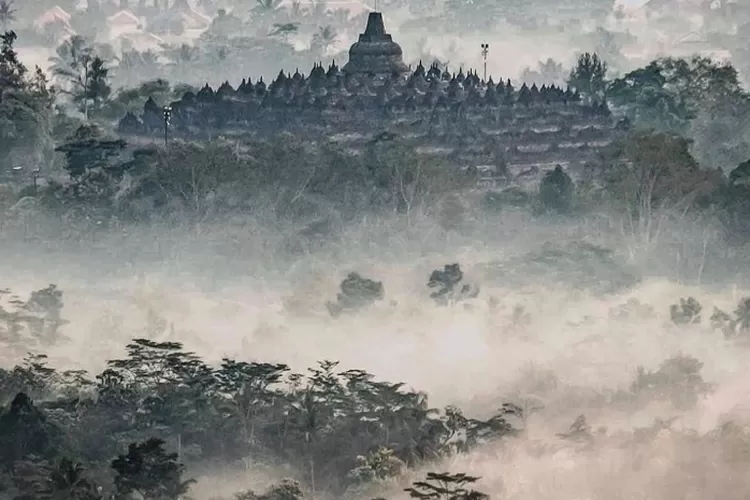[ad_1]
BONSERNEWS.com – Borobudur Temple is one of the historic buildings left by the Syailendra Dynasty. Behind its splendor, Borobudur Temple, which is located in Central Java, has a long history.
Borobudur Temple is located between several mountains in Magelang Regency, Central Java.
This colossal temple is a place of worship for Buddhists who are more than 1000 years old.
Also Read: What are the 1998 Student Action Demands? Then Has Reform Been Achieved? Let’s See the Full Explanation
Quoted from the good Indonesia page managed by the Ministry of Communication and Information, Borobudur Temple was designated as a world cultural heritage by UNESCO in 1991.
However, what is the history of the Borobudur Temple which is always crowded with domestic and international tourists?
According to the official website of the Borobudur Authority Agency, the construction of Borobudur Temple began around the 800s AD during the reign of King Samaratungga of the Syailendra Dynasty.
Also Read: Who Are the 98 Activists? Then Where Did They Eat? Let’s Look at the Current Actions of 98 Activists
The Kayumwungan inscription records that Borobudur Temple was built for almost 100 years and was completed on May 26, 824 AD.
Borobudur Temple was built to glorify Mahayana Buddhism, as a belief that was widely held by the people at that time.
However, when compared with its age, the use of Borobudur as a place of pilgrimage for Buddhists is very short, around 150 years.
With the end of the Mataram Kingdom in 930, the center of Javanese economic, political and cultural life shifted to the east and the Borobudur Temple began to be forgotten by the people.
Until finally the wilderness covered Borobudur Temple after earthquakes and landslides often occurred and hit Borobudur Temple.
Citing the Ministry of Education and Culture’s website, Borobudur Temple was first discovered by Sir Thomas Stamford Raffles in 1814 when the British occupied Indonesia.
Borobudur Temple was discovered by Raffles when he traveled to Central Java. On the way he found a collection of rock pictures covered with bushes.
Sir Thomas Stamford Raffles then assigned an engineer to conduct research and 200 people to cut down trees, burn bushes, and dig up the soil which buried the entire body of the Borobudur Temple.
The excavation process lasted for years. Until finally in 1835, Borobudur Temple again perched freely on a hill with its legs still covered in soil.
In the book ‘Borobudur’ (1983) by the National Committee for the Inauguration of the End of the Restoration of Borobudur Temple it is explained that the restoration of Borobudur Temple was first carried out by a Dutch engineer, Theodoor van Erp in the early 20th century.
